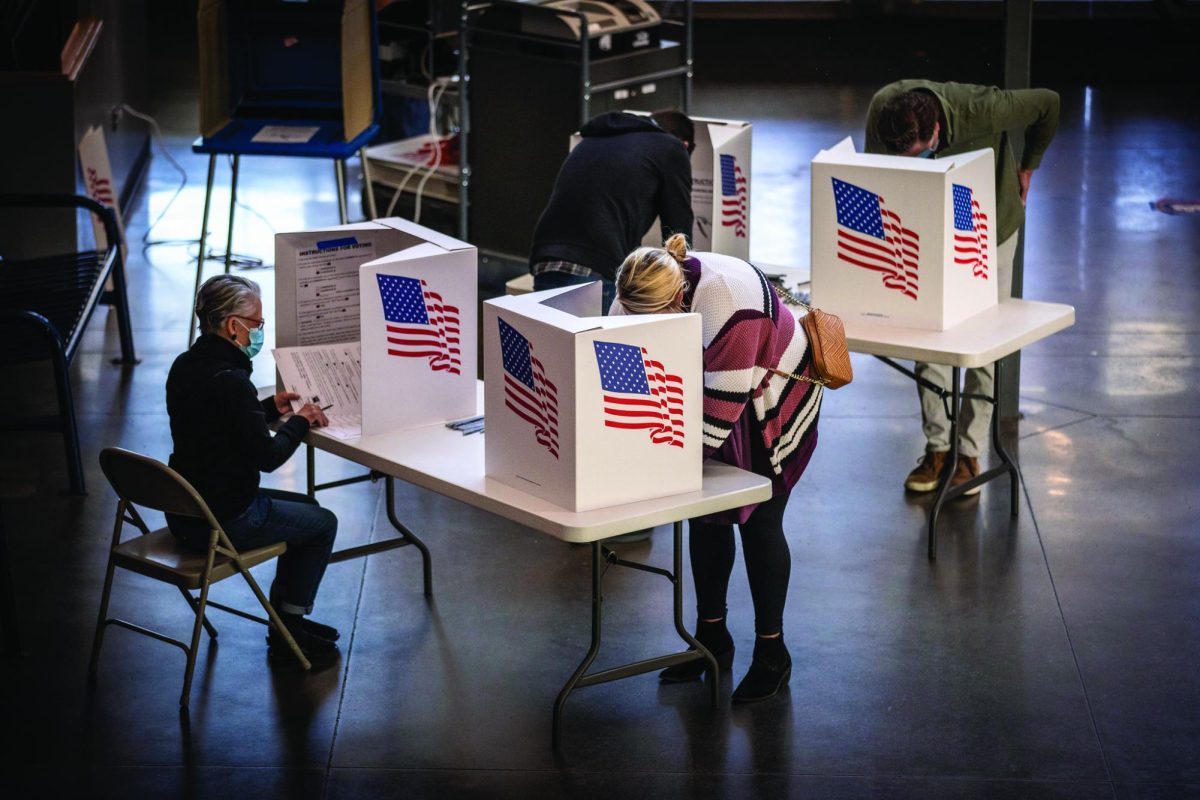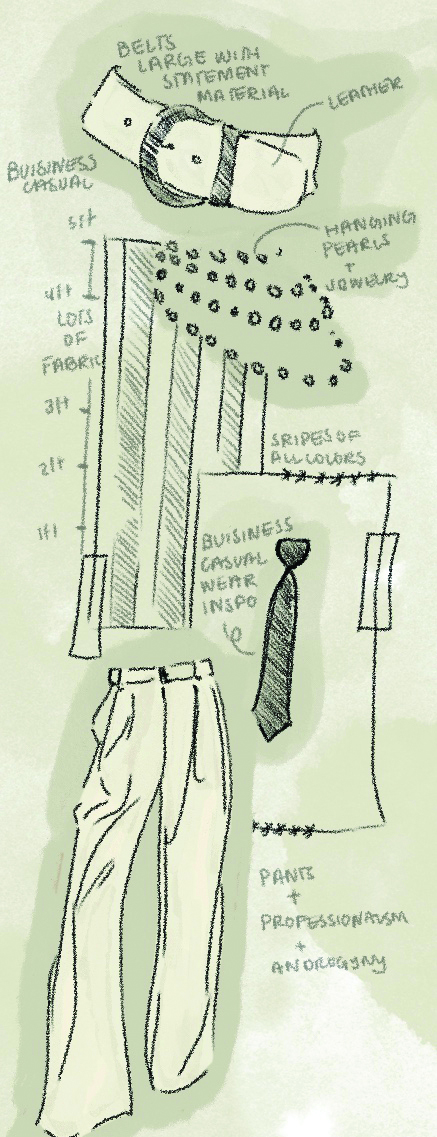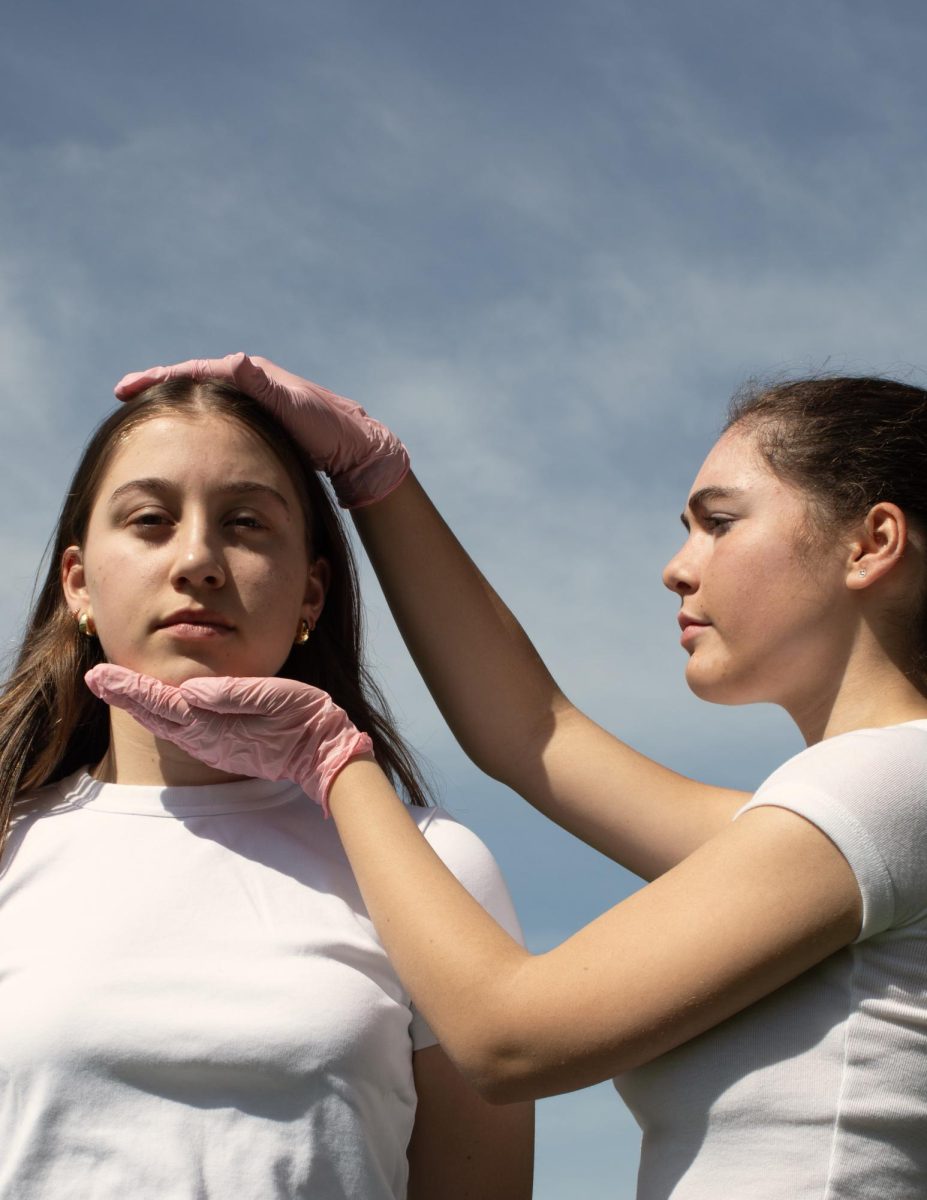By Cecelia ’13, Tahirah ’12
 When Tiffany ’12 wakes up each morning, her routine is fairly simple. She showers and washes up before slipping into a polo, skirt, sweatshirt and, if temperature permits, sweatpants; in ten to fifteen minutes she’s out the door. Upon winning free dress for a week as a member of the winning Hunger Games district, however, Tiffany found her mornings presented a new challenge. Because she bikes to school, deciding what to wear while considering both comfort and attractiveness became problematic, and she found herself dressing in clothes that felt like her uniform; she soon realized the grey skirt and polo she’d grown so accustomed to made her life much easier.
When Tiffany ’12 wakes up each morning, her routine is fairly simple. She showers and washes up before slipping into a polo, skirt, sweatshirt and, if temperature permits, sweatpants; in ten to fifteen minutes she’s out the door. Upon winning free dress for a week as a member of the winning Hunger Games district, however, Tiffany found her mornings presented a new challenge. Because she bikes to school, deciding what to wear while considering both comfort and attractiveness became problematic, and she found herself dressing in clothes that felt like her uniform; she soon realized the grey skirt and polo she’d grown so accustomed to made her life much easier.
“I’ve found that it’s easier to throw on my uniform than have to go through the process of finding what to wear,” Tiffany said.
This year, there have been more free dress opportunities for the community as a whole than there have been in years past, giving girls the opportunity to further express themselves through their choice of clothing. While most girls embraced the reward of free dress after winning the Hunger Games, many were faced with an age-old question they hadn’t needed to worry about for some time: “What am I going to wear today?”
For Marlborough girls from the Jazz Age to the Digital Age, deciding what to wear each morning has never been a challenge. The uniform allows us the comfort and practicality often denied to schools without a dress code.
However, due to the leniency within the uniform code, some wonder whether the creative expression has gone too far.
Evolution of the uniform
In 1927, Marlborough School created and enforced a uniform code for the first time. At first, the standard uniform was a white dress; since then, the uniform has changed as drastically as the school itself.
“You guys seem to have way more options than we had,” said President of the Alumni Association Carolyn Hampton ’84, whose uniform consisted of bright yellow, white, lavender or pink cotton dresses and saddle shoes.
“We looked like nurses, and I froze in the thin dresses. Our other option was a grey skirt and white shirt, so I always wore that instead,” she said.
While older uniforms lacked variety, the style and guidelines soon modernized, as the peter-pan collared dresses of the ’30s evolved into the long, colorful A-line dresses of the ’50s and eventually into our current options of grey and khaki.
Girls nowadays have the ability to incorporate their personalities and distinct styles into the uniform, and students observe a wide range of aesthetic choices throughout all grade levels.
7th Grade as a whole is known for accessorizing. As trends change, so do the accessories girls bring onto campus, and each year the older girls wait to see what style incoming students will popularize. Current seventh graders have said they enjoy distinguishing themselves as a grade with their accessories.
“As teenage girls, we need a way to express ourselves,” Alyce ’16 said.
While most of her classmates agree that they enjoy their ability to spice up the uniform, many students said they are happy they go to a school with a uniform code.
“I find it really easy to throw something on in the morning, but it’s fun to throw on an occasional headband or bow,” Zoah ’16 said
Michelle ’16 came from a school with no uniform code and said she was excited as an incoming student to don the Marlborough skirts.
“At the beginning of the year, I was proud to wear the uniform. It’s easier to just throw something on in the morning, but it’s also fun to accessorize a little every now and again,” she said.
Our reputation
As girls get older and move from Middle to Upper School, accessorizing becomes limited to over-sized scarves and baggy sweatpants, and the effort that goes into getting dressed each morning seems to diminish.
“I wake up, grab my shirt, grab my polo, throw on a sweater, slip on my sweats, and I’m out the door,” Lucia ’12 said. Hernandez said she doesn’t care what she looks like leaving the house and is comforted by the fact that none of her peers judge each other on their appearances.
While the girls themselves say they don’t care about what they look like, parents often express their concerned opinions about the uniform.
“Baggy pants under the short skirts takes away from the overall neatness of the uniform,” Amy Cohen, mother of Tess ’14, said. “While I do understand wearing sweatpants on cold days, when they’re worn constantly, I can’t say it’s my favorite look.”
Laura Furey ’85, a member of the Board of Trustees, speaks to alumnae, students and visitors on a daily basis and hears many opinions about girls’ appearances on campus. Overall, the comments have been positive. However, Furey’s mother, Daryn Horton ’59, as well as other older alumni, tend to agree with parents that skirts are too short, visible boxers inappropriate and sweatpants sloppy.
“[Older alumni] just want young girls to look a certain way,” Furey said. “My mother’s generation has a different sense of what is appropriate, because to them, a uniform means everyone looks the same. Still, Marlborough has changed so much.”
Although parents and some faculty do complain about the shrinking lengths of skirts and the unappealing look of sweatpants and boxers, chastising students for both slovenliness and showing too much skin have become embedded in Marlborough culture.
In September of 1927, Head of School Ada Blake wrote in the new uniform policy that the rules would prevent “anyone’s coming to school in clothes suitable only for teas or conversely, for ranch wear, and they make it necessary for a girl (if she is to shine) to shine by her own light and not the reflected light of her dazzling rainment.” While the rules were strict, over the years, girls found different ways to defy standards.
“When we were younger, our skirts couldn’t be above our knees,” Hampton said. “But girls would rebel by wearing their skirts shorter than we were allowed.”
Lack of uniformity?
In the early 30s, when the uniforms were first introduced, their purpose was to equalize and erase the differences and class distinctions between the students. During the Great Depression, when the gap between affluent and less-fortunate girls was much larger than it is today, the uniform was a way to put everyone on the same level and limit competition amongst the girls.
“I think that having a uniform is great at this school,” Head of School Barbara Wagner said. “If everyone is basically wearing the same uniform, there isn’t a distraction.”
Students expressed pleasure with the overall ease of having nothing but the occasional homework assignment to worry about in the morning before school.
“We’re able to be comfortable and focus on school. There’s no competition,” said Elaine ’12, who said she appreciates how the laid-back attitude about clothing offsets the stress of school work.
Many members of the Marlborough community said they agree that the uniform should be an equalizing force, preventing girls from devoting too much time to their appearance. However, some said they felt the wide variations currently allowed in the uniform have taken away from the intentions of a uniform: to keep everyone on the same level and maintain education as the ultimate focus on campus.
“7th Grade students shouldn’t outdo each other for who has the most accessories, and Upper School girls shouldn’t be trying to show who can care the least,” Receptionist Brenda Diaz said. “We shouldn’t have such extremes.”
As a student at Marlborough, alumna Tam Dickerson ’50 said students were not allowed to add any personalization to the uniform, a policy that was heavily enforced. Dickerson has noticed a complete transformation of the ways girls are wearing the uniform now.
“You go to Marlborough because you have certain standards to live up to, and there should be some standards of dress to reflect the school,” Dickerson said. “My daughter graduated in the ’80s, and when she visited the campus recently, she was shocked. The girls were basically out of uniform. I think there are other ways to show your individuality.”
And yet, living in a city as fast-paced and pop-culture oriented as Los Angeles, girls are constantly influenced by changing fashions and trends. Some argue that there is a positive side to free dress.
“Clothes are an expression of who people are, and fashion is a part of girls’ lives,” said Upper School Assistant Laura Morrison, who sees girls come in and out of her office daily. “The leggings, layering… it’s all an expression of personality.”
Many girls agreed, saying they are happy to have a uniform but are even more content knowing they can dress their skirts up or down, however they like.
“It’s great that everyone has their own look, even in [a] uniform,” Natasha ’15 said. “It’s nice to see girls able to [show] their independence.”
This diversity of style is embraced by both students and faculty.
“The flexibility doesn’t destroy the playing field,” Wagner said.
Some people even say that the flexibility in the uniform defines the Marlborough community.
“I think the greatness of the uniform is its lack of uniformity,” Amanda ’11 said. “There’s a delightful diversity on campus of accessorizing with scarves, belts, hats etc., that makes us and [the uniform] uniquely Marlborough.”












